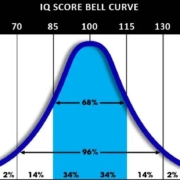On April 17, 2015 the United States Department of Education’s “Office of Special Education and Rehabilitative Services” (“OSERS”) sent a Memo to State Directors of Special Education in which they reaffirmed their “Letter to Delisle: Children with disabilities with high cognition” of December 20, 2013. As is evident by its title, that letter addressed the issue of eligibility under the Individuals with Disabilities Education Act (IDEA) for special education and related services of children with high cognition who may also have disabilities, sometimes referred to as “twice exceptional students” or “2E students.” For more information on some of the basics of 2E, please visit my prior post.
It is worth noting that the IDEA does not specifically address 2E students. However, OSERS pointed out that, when determining eligibility, the IDEA requires the use of “a variety of assessment tools” and prohibits the use of “any single measure or assessment” as the sole criterion for determining whether a child is a child with a disability. OSERS wrote of complaints that local educational agencies (LEA) were “hesitant” to conduct initial evaluations to determine special education eligibility. OSERS reiterated that the LEAs have an obligation to evaluate all children, regardless of cognitive skills, suspected of having one of the 13 disabilities outlined in 34 CFR § 300.8.
In regards to a Specific Learning Disability (SLD) classification, States must not require the use of a severe discrepancy between intellectual ability and achievement for determining if a child has an SLD. Also, regardless of whether the child is gifted, a student cannot be found ineligible for special education and related services under the SLD category solely because the child scored above a particular “cut score” established by State policy. This applies to all students being evaluated but is especially important for 2E students whose advanced cognitive abilities may allow them to score quite high on standardized tests which, in the absence of this prohibition, may have excluded them from consideration for SLD classification. However, discrepancies between intellectual ability and achievement may be used for determining whether a child has an SLD. Indeed, showing a severe discrepancy makes it easier to show that a gifted student has an SLD and is entitled to special education and related services.
The next time you are in a CSE meeting and you’re told that reading fluency is “not as important” as other reading assessments or that a weakness in reading fluency “does not indicate a reading disability,” make sure you point out that there is OSERS commentary that they specifically retained reading fluency in the list of areas to be considered when determining whether a child has SLD because it would be more likely that a child who was gifted and had SLD would be identified.
Hopefully these tips will help you at your next CSE meeting. Should you have any specific questions, feel free to contact me.







